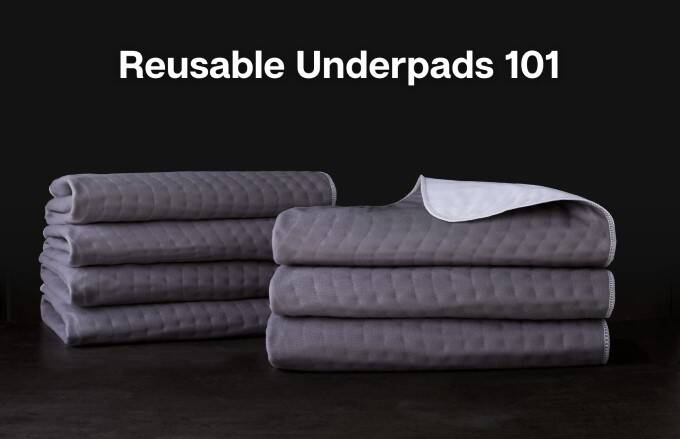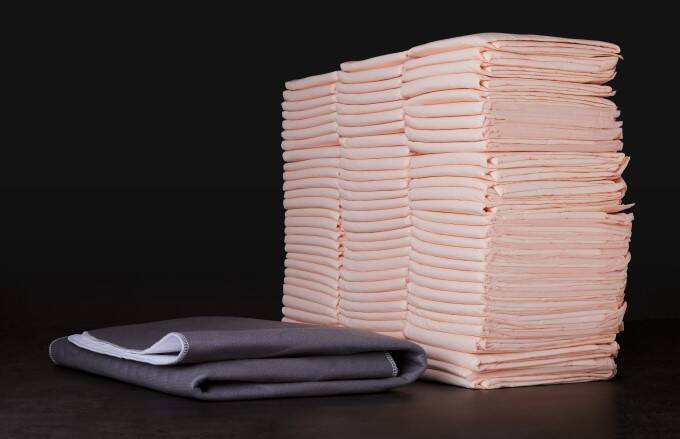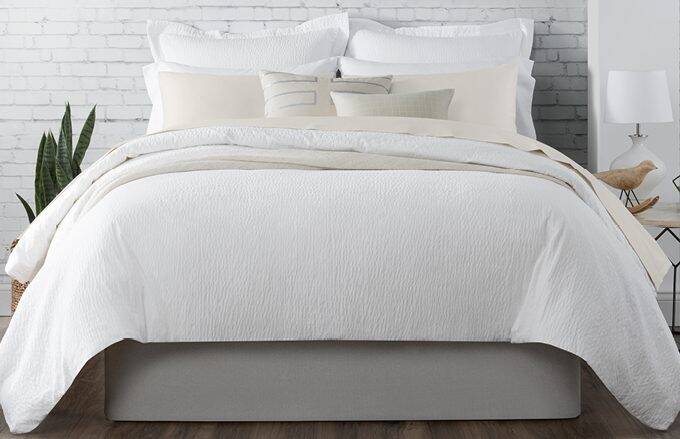November 11, 2024
Reusable Underpads 101: Everything You Need to Know

Effective incontinence care prioritizes patient comfort while minimizing moisture. Moisture-associated damage to the skin can lead to adverse conditions, ranging from discomfort to serious infection. Skin damage also increases the potential for additional functional, physical, cognitive, and mobility issues in many patients.
While delivering excellent patient care, healthcare systems must also continue to focus on strategic sustainability efforts and waste reduction. In the United States, the healthcare industry is the country’s second largest producer of environmental waste, amounting to more than 6,600 tons of solid waste every day. The costs to dispose of healthcare organizations’ solid waste continues to soar.
To this end, reusable underpads deliver numerous benefits over single-use disposable products.
But how do they work? And what factors need to be considered when selecting an incontinence care solution?
Reusable Underpads 101
If you are new to the concept of reusable underpads, or simply want to learn more, we’ve compiled a list of frequently asked reusable underpad questions below.
What is the importance of an underpad’s face material?
The soft surface—or “face” of an underpad—will directly touch a patient’s skin. Therefore, the overall comfort of the material is significant. Reusable incontinence underpads are available in a variety of face fabrics.
- Some solutions feature fabrics that focus on the coefficient of friction, meaning the product is specifically designed to lessen the likelihood of sticking to or catching the skin. This is important to know: the facing may feel soft, but when exposed to liquid, the material may stick to the skin.
- Some face fabrics are primarily focused on wicking; that is, the ability to pull moisture away from the skin. For example, a cotton / polyester blend may wick much faster than a 100% polyester material.
- Microclimate and heat management are also elements to consider. Will the face material ‘breathe’ and help dissipate heat around the patient’s body? Some fabrics accomplish this better than others.
What is soaker material? Why choose one type over another?
The heavier the soaker material (which is located in the inner portion of the underpad), the heavier the absorption capacity. However, heavier does not necessarily equal better (more on this in the next question).
When evaluating an underpad, it is important to ask about the soaker material and what it is designed to accomplish. Will the soaker focus on managing the fluid better internally, and pull the liquid down and away? Or will the soaker function primarily as a larger sponge?
Fluid management and capillary action are what you are trying to address. The soaker material should manage the moisture and dissipate it quickly, so that the experience is quicker-drying and better for the patient’s skin.
What does “soaker weight” mean? How do I determine what is right for my patient’s needs?
The higher the specified soaker weight, the thicker the underpad tends to be and the absorption capacity should correspond. Yet, this way of talking about an underpad is a bit outdated.
Thicker / higher soaker weight isn’t necessarily better, because that may mean that the patient is just sitting in more fluid.
In selecting an underpad, inquiring about the pad’s fluid distribution and fluid management capabilities can be more effective than simply asking about soaker weight.
What is important to know about the backing (or “barrier” layer) of an underpad?
Other than serving as another component in overall fluid management, the backing / barrier is structurally important, because it contributes to the underpad’s strength and durability. The particular type of backing material that is used can help the pad to have stability, present well, and lay flat.
Rounded corners are also preferred. Rounded corner construction can help the product to lay flat and reduce potential pressure points against the patient’s delicate skin caused by sharper, angled corners.
What is a laminated underpad?
Laminated means that the various layers of the pad are bonded together as compared to a quilted underpad where the layers are stitched together.
The benefits of this construction can include:
- Durability. Lamination can be a sign of a durable underpad. However, well-constructed, quilted underpads can be just as durable. Technical specifications and test results should be consulted to determine if a pad is suitable for your use case.
- Ease of laundering. Industrial laundries appreciate the structural integrity and overall durability of laminated underpads. The lamination process can also help to avoid differential shrinking.
- Flatness. Other types of underpad construction (particularly disposables) can bunch or wrinkle, creating increased discomfort and pressure points.
See our best-selling laminated underpad
What impact does the number of plys have? How do I choose the right amount?
Different layers (or “plys”) within an underpad serve different functions. Similar to soaker weight, more plys may not necessarily be “better.” However, it’s important to understand what the purpose of each ply is.
For example, some innovative solutions may focus on incorporating a skin-friendly facing surface with an acquisition layer that quickly pulls liquid into the internal structure of the pad. The soaker layers may be designed to capture the liquid and redistribute it, preventing the fluid from coming back up to the surface of the pad. And, as mentioned above, a laminated construction (in the final “ply”) can provide enhanced durability, strength, and fluid retention.
In Summary
Preventive incontinence care practices are essential for patient health and well-being. Equipping yourself with more knowledge about reusable incontinence care solutions can help you determine the right approach for your facility.
And we’re here to help. Our team has been inspiring care, comfort, and change in our communities since 1940. We can support your sustainability efforts, strengthen your supply, and help provide positive outcomes for your patients and staff. To connect with a member of our healthcare team of experts, contact us today.
Related Content

Why Reusable Underpads? Talking Points for your Team
Equipping your team with more knowledge about reusable underpad solutions can help you determine the best approach for your facility.

Examining Environmental Footprints: Reusable and Disposable Incontinence Underpads
A recent study published in the Journal of Nursing Care Quality aims to support clinicians’ knowledge to include environmental sustainability in decisions regarding patient care and reusable versus disposable incontinence underpads. A life cycle analysis was conducted, including soiling, reusable cycles before removal, supply chains, laundry use, and end-of-life environmental impact.

Summer School’s in Session! Anatomy of a Bed 101
Summer 2021 looks so much sunnier than last year, and we’d like to help you keep your skills sharp as guests continue to return to travel. We’re kicking off a series of easy go-to guides that you can use to boost the guest experience while keeping a careful eye on your budget—and we promise: no…